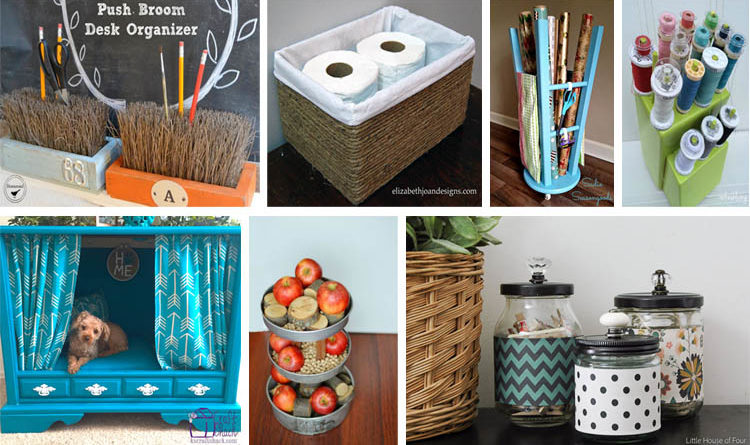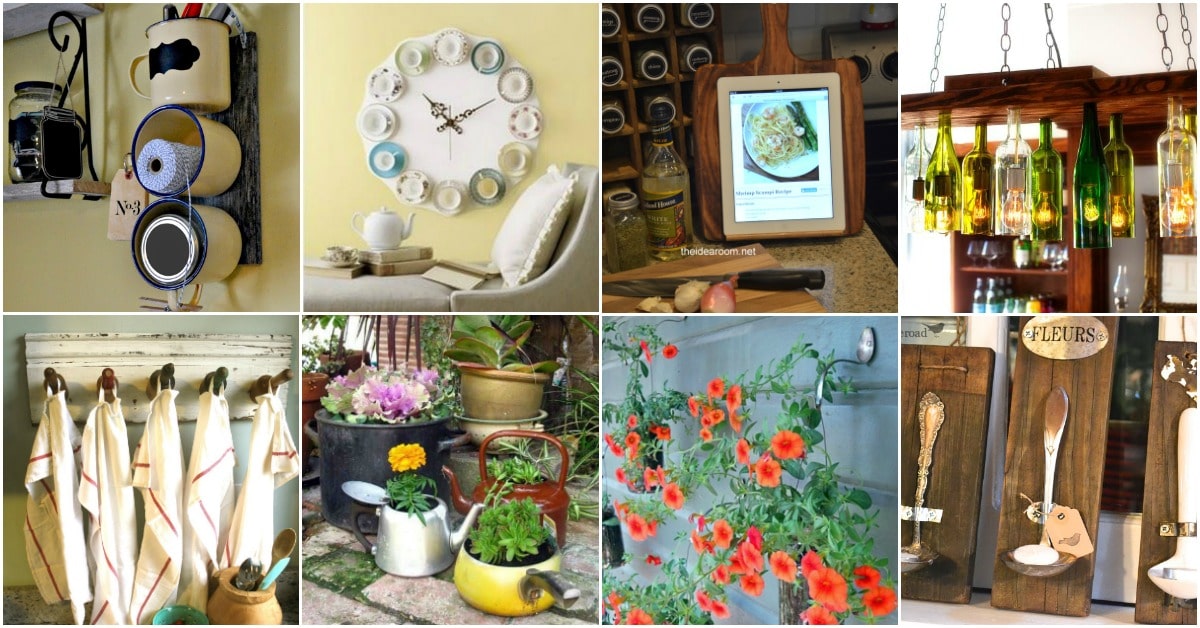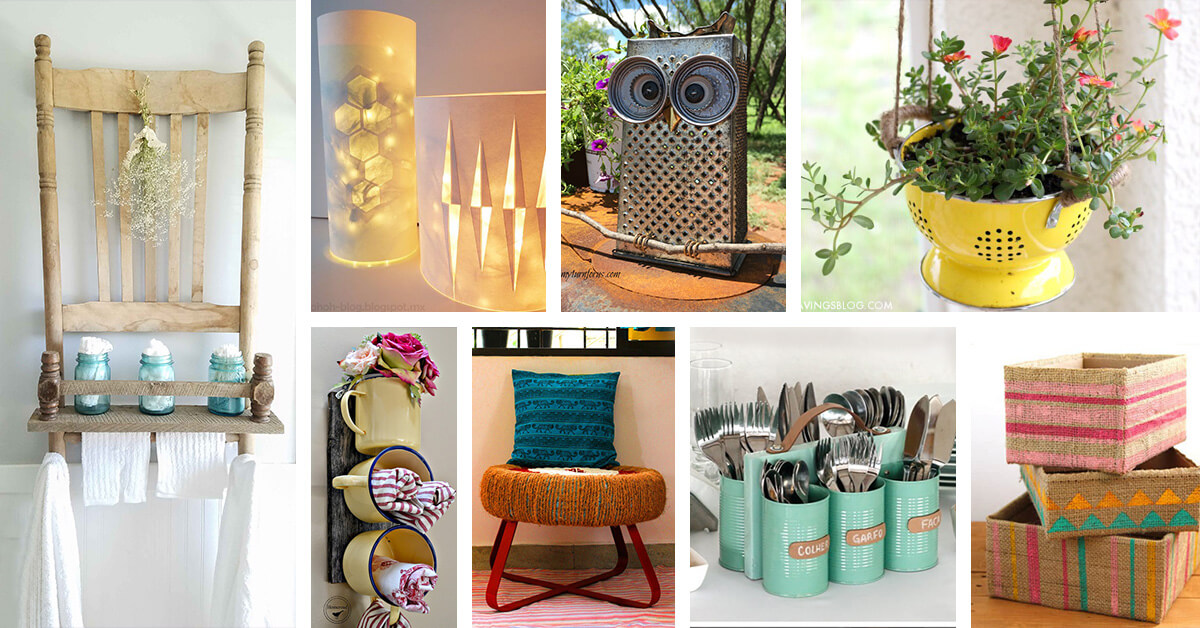Repurposing old items is not only a fun and creative endeavor but it also helps in reducing waste, saving money, and adding a personalized touch to your home decor. In this blog post, we’ll explore the world of repurposed decor, its benefits, how to choose the right materials, different projects you can undertake, and ways to showcase your finished pieces. So, let’s dive right in and start giving old items a new lease on life.
Introduction
What is Repurposed Decor?
Repurposed decor refers to the practice of taking old or discarded items and transforming them into something new and useful, often with a decorative purpose. It could be as simple as painting an old chair or as complex as turning a vintage suitcase into a stylish side table. The key idea here is to give a second life to items that would otherwise end up in the landfill.
Benefits of Repurposed Decor
There are several benefits associated with repurposed decor. Firstly, it’s environmentally friendly. By reusing items, we decrease demand for new products and reduce waste. Secondly, it’s cost-effective. Instead of buying new furniture or decor items, you can use what you already have or buy used items at a fraction of the cost. Lastly, repurposing allows you to unleash your creativity and create unique items that reflect your personal style and taste.
Choosing the Right Materials for Repurposed Decor
Finding and Assessing Old Items
When embarking on a repurposed decor project, the first step is to find suitable items. This might include items you already have at home, or those you can pick up at garage sales, thrift stores, or online marketplaces.
Where to Find Old Items
Garage sales and thrift stores are treasure troves for old items waiting to be repurposed. Online platforms such as eBay, Craigslist, and Facebook Marketplace are also excellent sources. Don’t forget to check your own attic, basement, or storage areas – you might be surprised at what you find!
Assessing the Condition and Potential of Old Items
Once you’ve found potential items, assess their condition. Look for solid construction and materials that can withstand the transformation process. Consider the item’s potential – can it be painted, reupholstered, or disassembled and reassembled in a new way? The possibilities are endless!

DIY Repurposed Decor Projects
Upcycling Furniture
Furniture pieces offer numerous opportunities for repurposing. With a little creativity and elbow grease, old and outdated furniture can become stylish, functional additions to your home.
Restoring and Refinishing Wooden Furniture
A coat of paint or stain can breathe new life into wooden furniture. Sand down the piece, apply a primer if necessary, then your chosen color or finish. Distressing techniques can add a rustic charm, while bold colors can make a statement.
Repainting and Reupholstering Chairs
Old chairs can easily be transformed with paint and new fabric. Choose a paint color that complements your decor, and a fabric that’s both stylish and durable. This is a great project for beginners as it requires few tools and materials.
Transforming Old Cabinets and Dressers into Something New
Old cabinets and dressers can be repurposed in numerous ways. An old dresser can become a chic bathroom vanity, while a cabinet can be transformed into a bar or coffee station. The key is to consider the item’s size, shape, and functionality in a new context.
Repurposing Household Items
Household items – from mason jars to vintage windows – can be turned into unique decor pieces. All it takes is a little creativity!
Creating Storage Solutions from Old Crates and Baskets
Old crates and baskets can be turned into stylish storage solutions. Stack crates to create bookshelves, or hang baskets on the wall for a unique display shelf. They can also be used as planters for a rustic touch to your indoor garden.
Turning Mason Jars into Decorative Pieces
Mason jars are incredibly versatile. They can be used as vases, candle holders, or even soap dispensers. You can paint them, fill them with fairy lights, or even make a terrarium. The options are endless!
Using Vintage Windows and Doors for Home Decor
Vintage windows and doors can add a touch of charm to any room. Use them as they are for a rustic look, or paint them for a more modern feel. They can be hung on the wall as art, used as a headboard, or even turned into a coffee table.
Repurposing Garden and Outdoor Items
Garden and outdoor items such as old tires, pallets, and tools can also be repurposed in creative ways. These projects not only add character to your outdoor space but are also great for the environment.
Making Planters from Old Tires
Old tires can be turned into unique planters. Paint them in bright colors and stack them in various configurations. They’re durable and perfect for growing flowers, herbs, or even vegetables.
Using Pallets to Create Outdoor Seating
Wooden pallets can be used to create stylish and functional outdoor seating. Add cushions for comfort, and you have a cozy spot for outdoor gatherings. This is an affordable and eco-friendly alternative to buying new patio furniture.
Repurposing Garden Tools for Decorative Purposes
Old garden tools like rakes and shovels can be repurposed into decorative pieces. For instance, an old rake head can be turned into a wine glass holder, while a shovel can be transformed into a unique wall art piece.

Tools and Techniques for Repurposed Decor
Essential Tools for DIY Repurposed Decor Projects
Having the right tools can make your repurposing projects easier and more successful. Essentials include a goodset of screwdrivers, a drill, sandpaper, paintbrushes, and a staple gun. These tools will help you disassemble, clean, paint, and reassemble your items with ease.
Painting and Finishing Techniques
When it comes to repurposed decor, painting and finishing techniques can make all the difference. From distressed finishes to stenciling and decoupage, there are endless ways to add texture, depth, and personality to your projects.
Upholstery Basics
If you’re planning on reupholstering furniture or adding fabric to other items, it’s essential to have some basic upholstery skills. Learning how to properly measure, cut, and attach fabric will ensure a professional and polished look.
Tips for Success with Repurposed Decor Projects
Planning and Designing Your Project
Before diving into a repurposed decor project, take the time to plan and design it. Consider the functionality, aesthetics, and overall vision for the item. Sketch out ideas, create mood boards, and gather inspiration to guide your creative process.
Safety Precautions to Take
While repurposing items can be fun, it’s important to prioritize safety. Wear protective gear such as gloves and safety glasses when working with power tools or chemicals. Follow proper ventilation guidelines when using paints or stains, and always work in a well-lit area.
Troubleshooting Common Issues
Like any DIY project, repurposed decor projects can sometimes encounter challenges. If you encounter issues such as pieces not fitting together, paint not adhering properly, or fabric wrinkling, don’t get discouraged. Seek advice from online forums, tutorials, or local DIY groups to troubleshoot and find solutions.
Showcasing and Displaying Your Repurposed Decor
Arranging and Styling Repurposed Pieces
Once you’ve completed your repurposed decor projects, it’s time to showcase them in your home. Consider the overall style and theme of your space and arrange the pieces accordingly. Mix and match repurposed items with new pieces to create a curated and eclectic look.
Incorporating Repurposed Decor into Different Spaces
Repurposed decor can be incorporated into various spaces in your home. For example, a repurposed ladder can be used as a unique bookshelf in a living room or as a towel rack in a bathroom. A repurposed dresser can serve as a stylish storage solution in a bedroom or as a statement piece in an entryway.Cleaning and Maintenance TipsTo ensure the longevity of your repurposed decor, it’s important to clean and maintain it properly. Use gentle cleaning products and techniques that won’t damage the materials. Regularly dust and wipe down surfaces, and inspect for any signs of wear or damage. Make any necessary repairs or touch-ups to keep your repurposed pieces looking their best.
